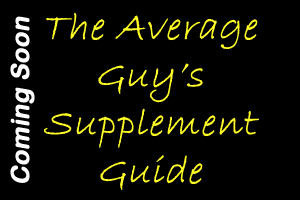In our last newsletter, we discussed mobility vs flexibility and how our bodies are a collection of joints, some requiring mobility and others requiring stability. We covered the need for mobility through the ankle and the hip. In this newsletter we are going to talk about knee stability, thoracic mobility, and shoulder health.
The knee demands stability. The knee as a joint has very little rotational ability. It's movement is basically that of a hinge. Basic movements that require this hinging movements of the knee are squats and dead lifts. Most issues involving pain in the knee are usually the result of a dysfunction either above or below. Solve the ankle mobility problem and a lot of knee issues will clear up. Start looking at mobility of the hip and the knee will benefit.
The thoracic spine or mid back area is not as well studied yet as some of the other areas such as hips, lumbar spine and knees. It is however, proving to be a critical component in maintaining a healthy lumbar and cervical spine. For the golfers out there, this is especially important. In the golf swing you need you need to be able to separate the upper body from lower body. During the backswing your pelvis needs to be stable allowing the shoulders to turn. If you are unable to separate the upper and lower body, you will be limited as to how much shoulder turn you can perform. This is where thoracic mobility is important – to allow movement through the back while keeping the pelvis stable.
Last but not least is the shoulder or gleno-humeral joint. Also closely connected to the health of the shoulder is the area of the shoulder blade (the sacpulo-thoracic joint). You cannot discuss shoulder health without talking about the stability of the shoulder blades which directly reflects the health of the rotator cuff. The scapula, rotator cuff and shoulder is an area that whole exercise physiology textbooks are written about. In order to have a shoulder that allows mobility, you need to have a stable base first. Without a stable base provided by the scapular muscles, the shoulder joint can become quite immobile, causing decreased range of motion and pain.
?
The scapular stabilizers (lower trapezius, rhomboids, serratus, levator scapula) are responsible to hold and lock the shoulders in the right position for the shoulder to function properly. Some of the exercises that we use to strengthen these various muscles are as follows. All rowing movements will help to strengthen the trapezius and rhomboids. We will instruct clients to pinch the shoulder blade prior to initiating any rowing movements. When you pinch your shoulder blades together, the rhomboid muscles in the middle of your upper back activate. These muscles originate along the spine (C7 and T1) and then attach themselves to the inner border of your shoulder blades. The pinching action will pull the shoulder blades together and this in turn with other muscles throughout the upper back and shoulder (rotator cuff) will cause the shoulder to sit in an anatomically correct position allowing proper function of the shoulder.
Other exercises that benefit the shoulder joint are the lat pull down and prone trap raise. We also have variations along those exercises that we use (stiff arm pull downs, high pulley rows). Often with these exercises we will instruct clients to “pull their shoulders to their hips”. This prevents the shrugging so often seen with these exercises and once again helps to maintain the shoulder in a healthy position. The muscles primarily responsible for this are the middle and lower trapezius. The trapezius muscle is a large muscle that originates at the skull , the spine of C7 and all the thoracic vertebrae . It then inserts along the rear of the shoulder, the scapular spine and part of the clavicle. The trapezius muscle's main responsibility is to keep the scapula down (no shrugging) and to maintain stability to allow shoulder mobility.
So, this is starting to turn in Anatomy 101 and I may have gotten a bit off track. The scapular and shoulder, as I mentioned are worthy of a book on their own. I am sure either you personally or someone you knows has had, does have or will have shoulder problems. It is probably the most common problem we see in and out of the gym. And because of so much of what we need to do the keep healthy and strong, involves the shoulder, we much be diligent about the work necessary to keep the this joint healthy.
Till next time,
Narina Prokosch, RN CPT
“Monitoring, Mentoring, Motivation”
Related Articles:
Mobility vs. Flexibility, Part 1 – What's the Diff?
